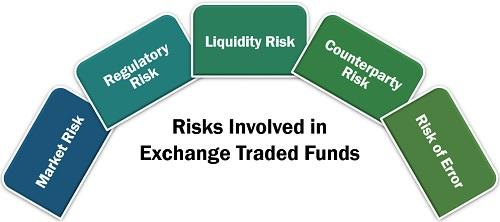
The Forex market with opportunities come about with a variety of instruments that people use to gain exposure. While it is common for people to leverage Contract for Difference to trade individual pairs, currency exchange trade funds offer some of the best ways of investing in the highly competitive marketplace.
What are currency ETFs?
Such ETFs are simple instruments designed to offer strategic exposure without having to trade individual currency pairs. Instead, they allow people to gain exposure to a pool of foreign currencies pooled together in a fund to track an underlying currency or other securities.
While such ETFs can track the performance of a basket of currencies, others are set up to track a single currency. For instance, the Betashares US Dollar ETF (ASX: USD) tracks the performance of the US dollar relative to the Australian dollar. Consequently, the USD appreciating by 10% often results in the currency ETF also appreciating by 10%. The reverse is also true.
They can be bought and sold on exchanges like stocks or commodities. Additionally, they operate like mutual funds as they can be set up to invest in a portfolio of other securities, such as tracking things like benchmark indices.
Most currency ETFs come backed with bank deposits of foreign currencies. Others are a little bit complex designed to purchase currency derivatives to achieve exposure to certain foreign legal tenders.
Being funds, they are managed passively by highly experienced money managers. By investing in such funds, investors get to profit from price changes of the overall fund as they trade in the market like any other instrument.
Investing in these funds allows investors to gain exposure to an array of world currencies while also gaining the leeway of alleviating any risks that might come about in the trillion-dollar marketplace.
Why currency ETFs
While currency ETFs offer an ideal and cost-effective option of gaining exposure in the currency market, they can also be used to hedge against significant exchange rate fluctuations. In addition, people trade them to profit from price changes that come into play as they are listed in exchanges.
Additionally, currency ETFs that invest in bank deposit accounts denominated in foreign currencies earn interest over time. The interest earned from such investments is usually distributed to investors whenever it exceeds underlying fees and expenses.
What to consider before investing
Any investment product issued by the government as well as currencies is relatively stable and secure. However, that is never the case with currencies trading in the foreign exchange market, as they possess the highest level of risk given the extreme levels of volatility and fluctuations always in play.
The fact that currencies can be entirely volatile owing to people reacting to changes in economic data, interest rates, and political developments make them extremely risky instruments to trade. However, one can shrug off all these risks by investing in well-managed currency ETFs
Managers of such ETFs deploy a wide range of strategies to ensure risks associated with trading fiat are kept at a bare minimum to the end investor. In addition to deploying various strategies, the managers can peg their ETFs on cash deposits or short-term bonds in an underlying currency.
How to choose
When it comes to selecting a currency ETF to invest in, the following two things are important.
Exposure
At the start, it is important to have in mind the kind of exposure that one needs in the highly competitive marketplace. With exposure, it is important to know which fiat you ought to go long and which you need to go short. Additionally, it is important to detail whether you need exposure against a basket or a single currency.
While some opt for currency ETFs that go long the US dollar against a basket of other currencies, others settle on those that go short the greenback against a basket of other major pairs. In this case, ETFs that short the dollar make money whenever the USD depreciates against the majors, while those long-only make money when the greenback increases in value.
Structure
In addition to figuring out the kind of exposure one needs depending on the developments in the currency market, it is also important to understand the kind of structure deployed by the underlying ETF. The structure determines the type of strategy deployed as well the kind of risks and tax implications that one will have to contend with.
Currency ETFs structured as grantor trusts offer exposure to spot exchange rates by holding foreign currency in bank accounts. Open-ended structured funds, on the other hand, offer exposure to treasury bills through forward currency contracts.
Some currency ETFs are also structured as commodity pools. In this case, they hold futures contracts and allow people to gain exposure to underlying currencies. Finally, currency ETNs are a special type of debt securities that are slightly riskier as they have no principal protection.
The risks
While currency ETFs offer exposure to a given currency or a basket of fiats, they also come with a fair share of risks that investors should be wary of. For starters, exchange rates are susceptible to a number of economic releases, political developments, and interest rate changes.

Consequently, macroeconomic events can impact multiple currencies tracked by a currency ETF, consequently affecting its performance even though it is set up to offset such risks. Factors that influence a good number of currencies tracked can significantly affect the ETF performance.
Additionally, currency ETFs are managed passively by money managers. Being human, such professionals can also fail to detect underlying risks and put the necessary measures consequently affecting performance.
Bottom line
Currency ETFs are a special class of financial instruments designed to provide a way of investing in the trillion-dollar currency market. While most people turn to them to diversify investment portfolios, some rely on them to hedge against exchange rate fluctuations or to speculate on rate changes.
They are some of the most cost-effective instruments to trade as they come with low management fees and low transaction fees. Consequently, they offer a much cheaper alternative to gain exposure to a foreign currency compared to using a foreign bank account.








Leave a Reply